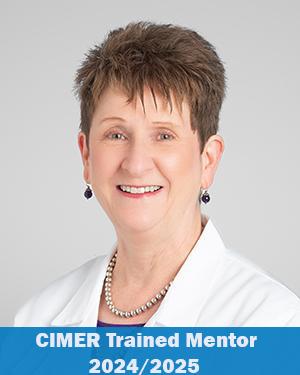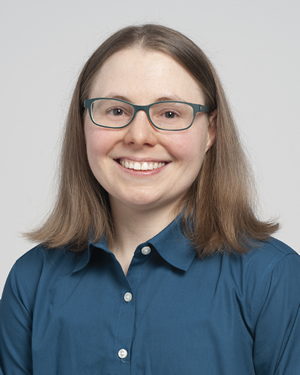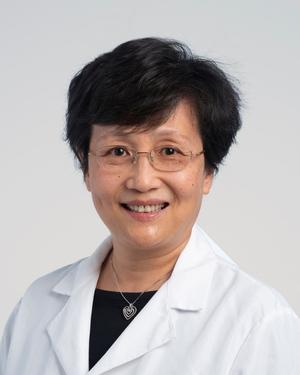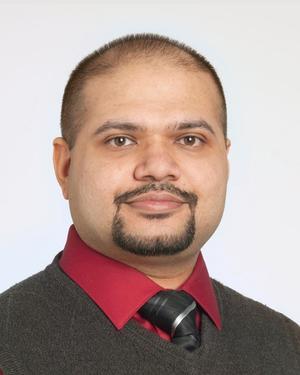Research Technology & Services
Electron Microscopy Core
-
Electron Microscopy Core
- About
- Services
- Equipment
- Grant & Publications
- Acknowledgment Guidance
About Us
Transmission (TEM), Scanning (SEM) and 3DSEM electron microscopy are available in the Core for imaging and analyzing specimens at the ultrastructural level. Possible samples include fresh tissue specimens, cultured cells growing on a substrate, cells in suspension or subcellular fractions (for purity determinations). Sub-cellular localization of antigens within cells by immunogold labeling can be performed, as well as negative staining for visualizing samples such as microparticles and exosomes. Elemental analysis (EDAX) is also available together with SEM.
To recognize the Imaging Electron Microscopy Core personnel or technology for support of your research, please refer to the Acknowledgment tab.
Contacts






Services
The EM services comprise transmission (TEM), scanning (SEM) and large volume 3DSEM electron microscopy.
TEM services include routine processing of samples, (glutaraldehyde-osmium fixation, dehydration and plastic embedding), thick or ultra-thin sectioning and photomicrography of thin sections. Possible samples include fresh tissue specimens, cultured cells growing on a substrate, cells in suspension or subcellular fractions (for purity determinations). We offer sub-cellular localization of antigens within cells by pre-embedding or post-embedding immunogold localization. Negative staining can also be performed for observation of samples such as microparticles, exosomes and nanoparticles.
Conventional 2D SEM services include help with fixing, dehydrating, critical point drying and sputter coating of samples followed by viewing in the SEM. Energy-dispersive X-ray microanalysis (EDAX) is available for elemental analysis of samples.
Large volume 3DEM (also called Serial Block-face Scanning EM) includes sample processing (glutaraldehyde-osmium fixation, dehydration and plastic embedding), sample trimming, mounting, imaging and analysis. This technique combines confocal-like image stacks, EM resolution, automated image acquisition and innovative analyses. Three microscopes are available and all are equipped with backscattered electron detectors optimized for low kV serial block-face scanning electron microscopy, and all systems feature optional low-vacuum modes for samples with exceptionally low conductivity.
3DEM analysis is carried out by experienced large volume 3DEM applications specialists. The Core has existing software pipelines for management and processing of large datasets that are implemented using robust Linux software and open-source applications (ImageJ, Python/TensorFlow, R). They can be readily parallelized for high throughput and Deep-Learning applications on the Lerner Research Institute's Computing Services cluster. There are six workstations dedicated to 3DEM image processing. Our pipelines interface with the Lerner Research Institute's Computing Services’ 10 PB server and the Imaging Core’s high-end Windows-based workstations and software for final visualization and modeling. Most samples are stained and imaged by Core staff and provided via Lerner Research Institute server or cloud server, but we provide training for interested individuals. Analysis and software assistance is also provided.
Equipment
FEI Tecnai G2 Spirit BioTWIN (Transmission Electron Microscope; FEI, Hillsboro, OR)
- 20-120 kV
- Magnification: 22x - 300,000x
- Computer-controlled stage for large-field-of-view (montage)
- Orius 832 CCD Camera, 11 megapixel (Gatan, Inc., Pleasanton, CA)
- DigitalMicrograph software (Gatan, Pleasanton, CA)
EM UC7 Ultramicrotome (Leica Microsystems GmbH, Vienna, Austria)
- 20-120 kV
- Magnification 9.6x-77x
- Eucentric stereo carrier +5/-8 degrees
- 0-15000nm section thickness
EMS150T ES Sputter Coater (Electron Microscopy Sciences, Hatfield, PA)
- High Vacuum Turbo Pumping
- Sputter Coater with gold target
- Film Thickness Monitor
- Glow Discharge Insert
Zeiss Sigma VP scanning electron microscope (Carl Zeiss Inc, White Plains, NY)
- 0.1kV - 30kV
- Magnification: 100x-250,000x
- image resolution: 512x512 to 40000 x 40000
- variable pressure mode: 10Pa - 50Pa, High vacuum: 10-6 mBar
- detectors: Zeiss: SE2 (Everhart-Thornley), InLens, VP-SE2 (Variable pressure), TV mode
- detectors Gatan: Backscatter electrons (3V-BSED; Gatan, Pleasanton CA)
- detector (ThermoFisher Scientific): UltraDry Xray spectroscopy detector, 10mm2 SDD crystal, 129eV resolution
- Stage2: 3View in-chamber ultramicrotome (Gatan, Pleasanton, CA)
- Digiscan scan controller and image acquisition system (Gatan, Pleasanton, CA) with licences for 3VIEW operation and stage control with Digital Micrograph software (Gatan, Pleasanton, CA)
- Noran System 7 X-ray Microanalysis System (Thermo Electron North America, LLC, West Palm Beach, FL) for elemental analyses using Energy Dispersive XRay (EDAX)
Zeiss Sigma VP scanning electron microscope; (Carl Zeiss Inc, White Plains, NY)
- 0.1kV - 30kV
- magnification: 100x-250,000x
- image resolution: 512x512 to 40000 x 40000
- variable pressure mode: 10Pa - 50Pa, High vacuum: 10-6 mBar
- detectors: Zeiss: SE2 (Everhart-Thornley), InLens, VP-SE2 (Variable pressure), TV mode
- detectors Gatan: Backscatter electrons (3V-BSED) (Gatan, Pleasanton CA)
- stage2: 3View in-chamber ultramicrotome (Gatan, Pleasanton, CA)
- Digiscan scan controller and image acquisition system (Gatan, Pleasanton, CA) with licences for 3VIEW operation and stage control with Digital Micrograph software (Gatan, Pleasanton, CA)
VolumeScope Teneo scanning electron microscope system (FEI, Hillsboro, OR)
- 0.1kV to 30kV
- magnification: 100x-300,000x
- detectors: T1 (secondary and backscatter), T2 (secondary), lowVac.
- Volumescope in-chamber ultramicrotome for serial blockface imaging
- MAPs 2 software to control VolumeScope image acquisition and processing
- Amira software for image processing and other software for hardware control (Thermofisher Scientific, Hillsboro, OR)
Grant & Publications
For transmission EM (TEM) we offer embedding, thin and thick sectioning (including cryosectioning), pre and post-embedding immunoEM and sample observation in our FEI Tecnai G2 Spirit BioTWIN equipped with a Gatan SC1000W, Peltier cooled, 14-bit, 11 megapixel camera. The Core also offers scanning EM (SEM) (including available elemental analysis [EDAX]). Users can get help fixing, dehydrating, critical point drying and sputter coating their samples in preparation for viewing and imaging in the SEM.
The service is managed by a technician with more than twenty seven years’ experience in biomedical research EM. In addition to assistance with microscope imaging, she provides complete sample preparation services including processing, glow discharge, embedding, thin and thick sectioning as well as sputter coating for SEM samples.
Beyond image acquisition, our facility also has a variety of software packages available for post-processing and analysis of EM data: such as PerkinElmer's Volocity, Universal Imaging's MetaMorph and Media Cybernetics' ImagePro Plus.
Three-dimensional Serial Block Face Scanning Electron Microcopy (SBFSEM) combines several powerful modalities: serial section electron microscopy, automated image acquisition, and advanced analyses. Together, these techniques can be used to examine the ultrastructure of cells and tissues with nanometer resolution. Sub-nuclear structures such as individual chromosomes and the mitotic spindle have been imaged and modelled.
Lerner Research Institute's 3DEM Ultrastructural Imaging and Computation Core provides state-of-the-art infrastructure for advanced large volume 3D electron microscopy. Our serial blockface SEM (SBFSEM/3DEM) equipment consists of three systems: a Teneo VolumeScope 2 system, which represents the second-generation of serial blockface imaging. It consists of a Teneo SEM equipped with the VolumeScope stage-mounted ultramicrotome and MAPS software to facilitate smart-feature operation, multi-energy deconvolution for virtual slicing and to support correlative image set overlays. We also have two Zeiss Sigma VP systems equipped with Gatan 3View in-chamber ultramicrotome stages. Both types of systems are equipped with backscattered electron detectors optimized for low kV serial block-face scanning electron microscopy, and all systems feature optional low-vacuum modes for samples with exceptionally low conductivity. Importantly, the 3DEM Core has existing software pipelines for management and processing of large datasets, and experience in many types of analysis. Pipelines are implemented using robust Linux software and open-source applications (ImageJ, Python/TensorFlow, R) that can be readily parallelized for high throughput and Deep-Learning applications on the Lerner Research Institute's Computing Services cluster. We have six workstations that are dedicated to 3DEM image processing. Our pipelines interface with the Lerner Research Institute's Computing Services' 10 PB server and the Imaging Core’s high-end Windows-based workstations and software for final visualization and modeling. Most samples are stained and imaged by Core staff and provided via Lerner Research Institute server or cloud server, but we provide training for interested individuals. Analysis and software assistance is also provided.
Acknowledgment Guidance
Acknowledgments and Authorship
All work performed by Cleveland Clinic Shared Laboratory Resources should be acknowledged or considered for co-authorship in scholarly publications, presentations, and posters. By acknowledging shared resource expertise and instrumentation, you play a critical role in supporting our mission to maintain access to cutting-edge technology and services on our campus into the future.
The Cleveland Clinic Shared Laboratory Resources participate in the Research Resource Identifier Initiative to promote transparency and reproducibility of scientific methods. Please include the unique Research Resource Identifier, RRID number, in the Methods or Acknowledgments sections of your manuscripts.
Example Acknowledgments:
- We acknowledge the Cleveland Clinic Research Imaging Electron Microscopy Core (RRID: SCR_027161), especially [staff name], for their assistance with [technique/technology].
- This research was supported in part by Cleveland Clinic Research Imaging Electron Microscopy Core (Cleveland, OH) (RRID: SCR_027161).
Getting Started
View prices and request services through iLab. Register for an iLab account and visit the desired core's page to get started.
Questions? Contact Us